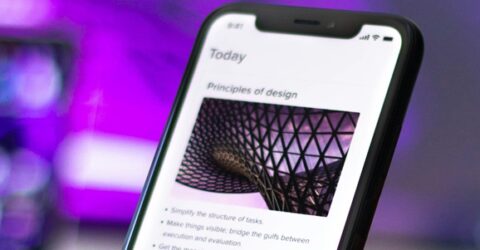Should I jailbreak my smartphone?
Understanding the pros and cons of jailbroken smartphones helps you to decide whether to risk your device’s safety for extra functionality

One of the most remarkable cultural shifts of the 21st century involves our dependence on smartphones for internet connectivity.
Rather than using desktop or laptop computers, with their greater processing power and larger screens, our connection with the digital world typically relies on a five-inch glass pane.
It also involves a curated collection of software apps, moderated by either Google (on Android devices) or Apple (on iOS handsets).
In truth, you have relatively limited control over your smartphone’s appearance and functionality.
It runs at a CPU (clock) speed predetermined by the manufacturer. The fonts, graphics and layout are all fixed. There’s often superfluous software which you can’t delete.
These attributes are set by the manufacturers and operating system developers, and in normal circumstances, you’d have to passively accept them.
It may surprise many readers to discover that these aspects (and many others) can be adjusted, with tens of thousands of apps awaiting discovery outside official app stores.
However, unlocking your smartphone’s full potential is a complex process, with the unfortunate side-effect of invalidating any existing warranty.
Tonight there’s gonna be a jailbreak
Jailbroken (or rooted) phones have far more flexibility and scope for customisation than stock models.
In essence, you’re taking off the restraints applied to the device before it leaves the factory, for better or worse.
It’s the smartphone equivalent of modifying your car beyond the manufacturer’s specifications. It’s not illegal, but it does open up risks of hardware conflicts and third-party vulnerabilities.
On a car, you can fit non-manufacturer parts, upgrade everything from the audio system to the exhaust, tune the engine for greater performance and customise the interior to your heart’s content.
On a smartphone, you can increase its clock speed to improve response times and gaming capabilities – or extend battery life by slowing the clock down.
You can change the default font, screen resolution, app icons and storage settings. It’s even possible to change what happens when you press physical buttons or swipe across the screen.
Jailbreaking unlocks access to a wealth of additional apps and programs which have been rejected by Google Play or the Apple App Store, yet still exist online.
While some apps are rejected on quality grounds, others are turned down because they’re better than Google and Apple variants, risqué, resource hungry or simply a bit rough and ready.
Some outlawed apps might be harmful or unstable, harvest too much user data or simply be of poor quality.
Pros and cons of jailbroken smartphones
Let’s start with some positives.
The biggest reason many people jailbreak their devices is to access additional apps, but eliminating bloatware is another key benefit.
Bloatware hogs a lot of system resources, especially on more basic handsets, and deleting it (as opposed to merely disabling it) could unlock additional storage or superior performance.
Jailbroken devices are infinitely customisable, far beyond merely changing the wallpaper or the ringtone.
There are also more online data backup options available.
A key downside is the sheer amount of effort needed. Rooting or jailbreaking a handset is a multi-stage process, gambling on website instructions or third-party rooting toolkits.
Some of these kits will be malicious in nature, while non-approved apps could be harbingers of malware, spyware, ransomware and other unwelcome cybercrime weapons.
Once you breach the End User Licence Agreement, don’t expect support. The manufacturer, original OS developer and in-store technicians will all refuse to work on a jailbroken handset.
Rooting a device is irreversible, and since any warranties or guarantees are instantly invalidated, you may be left holding a very expensive paperweight if anything goes wrong.
Having assessed the pros and cons of jailbroken smartphones, most consumers will decide it’s not worth the time and effort, let alone sacrificing any remaining warranty.
However, it’s intriguing to consider what a post-warranty handset could be capable of once it’s jailbroken…






